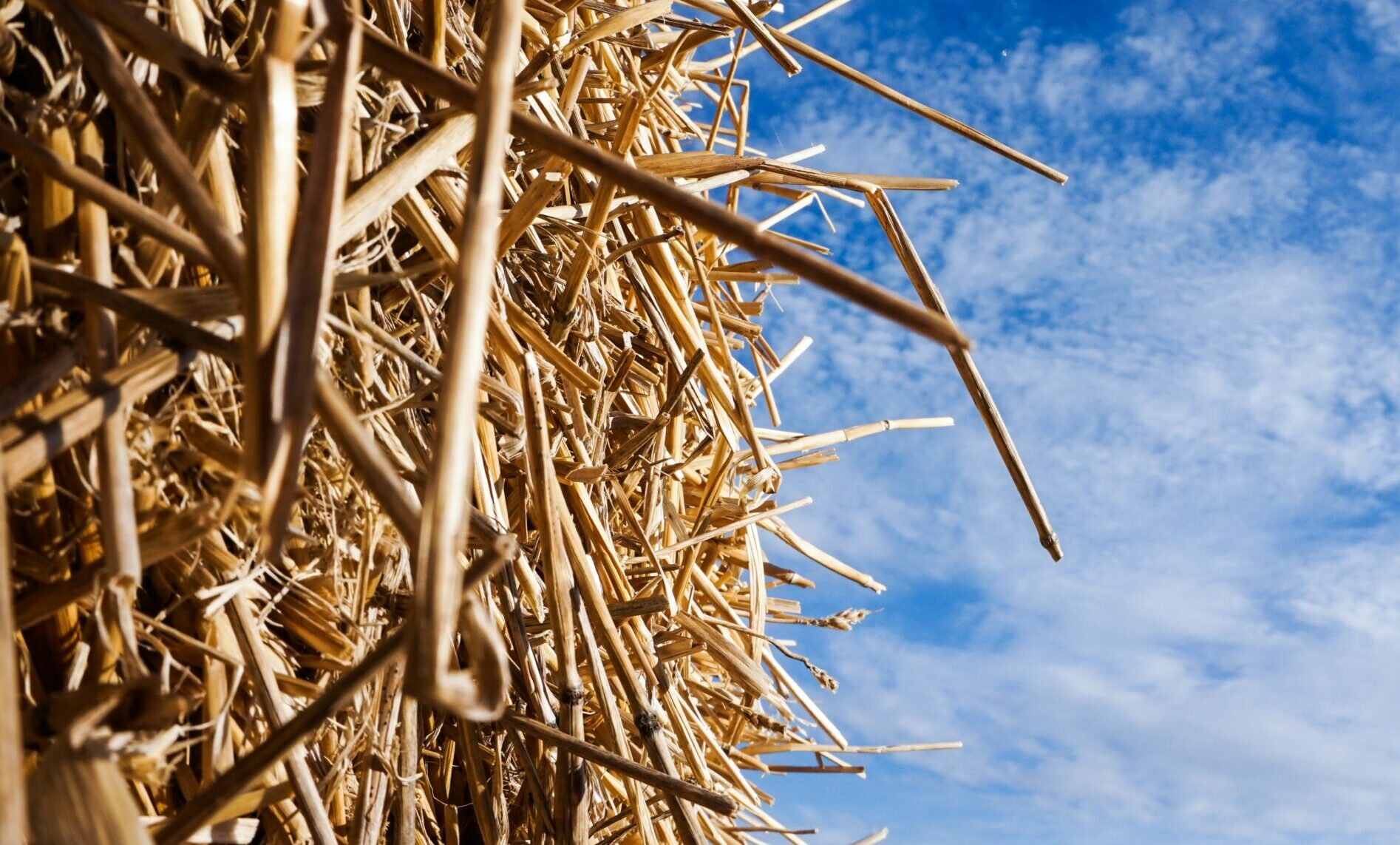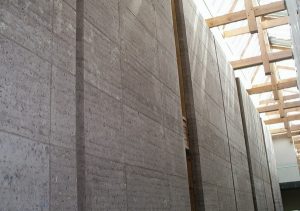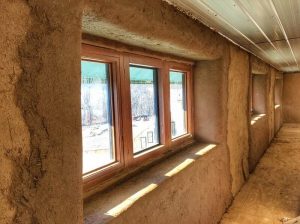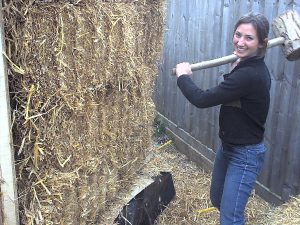Strawbale construction is not only a unique and aesthetically pleasing alternative to conventional building methods but it is also a powerful solution to reduce the carbon footprint of a construction project. This benefit is catching the attention of more and more people as a piece of the puzzle in the larger, more complex solutions needed to counter climate change.
We wanted to share this beautiful film on strawbale construction from Patagonia, a leading B Corp company, with you. In the film ‘Home, Grown’, Patagonia’s founder and author of Let My People Go Surfing, Yvon Chouinard, shares his thoughts on waste as the future of business and how the home construction industry can become a part of the climate change solution.
Straw acts as a carbon sink, meaning it absorbs and stores CO2 from the atmosphere. During the growth of the straw, the plants absorb carbon dioxide through photosynthesis.
When used as a building material, the straw continues to store that carbon, effectively sequestering it for the life of the building. By using straw as a building material, you are effectively locking away carbon that would otherwise contribute to the greenhouse effect.

Furthermore, strawbale construction can be combined with other sustainable practices to enhance its carbon sequestration potential. For instance, incorporating green roofs or planting trees around the building can further offset carbon emissions and create a more sustainable local ecosystem.
Most strawbale homes include the use of wooden structural framing and use the bales as an infill insulative material, but as demand for greener practices has grown, there are often options for selecting wood products and timbers grown with more sustainable practices. (Look for “sustainably-harvested wood.”)
Of the various bale wall system types, Load-Bearing, or Nebraska-style, uses the least amount of wood in its construction. Learn more about different wall systems and their pros/cons in our blog Strawbale Wall Systems – Your Wall, Your Way.

More on straw bale embodied carbon attributes is available here from The Carbon Smart Materials Palette®, a project of Architecture 2030 and a living resource that shares knowledge and resources on the embodied carbon in construction materials.
Each action, decision, and alternative material selection choice may only seem to be a drop in the vast carbon bucket, but it is our belief that drops can add up to significant impacts. Watch Home, Grown for more information.
More on strawbale construction
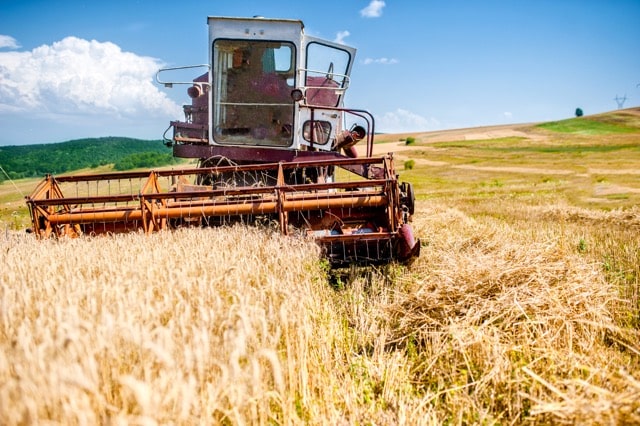
Unlike conventional building materials such as fiberglass or spray foam insulation, straw is a renewable and biodegradable resource that requires low embodied energy. With the repurposing of it from a waste or agricultural byproduct, strawbale homes offer more sustainability for home construction than more conventional options that are commonly seen today.
What is embodied energy? “Embodied energy is the sum of all energy inputs required to create a product, and therefore “embodied” into it… Starting from a material’s very beginnings as natural resources, embodied energy will include all energy involved in mining and extracting the raw materials from the Earth, plus the energy required for processing, preparation, and packaging.” US Department of Energy.
Here’s an easy-reading tutorial on the subject also by the DOE.
But that’s not all!
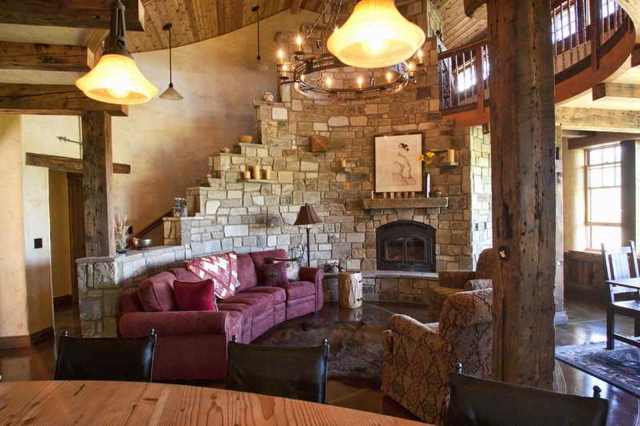
One of the key advantages of strawbale construction is its exceptional energy efficiency resulting in reduced heating and cooling needs. The insulating properties of straw bale walls lead to improved thermal performance, keeping the interior temperature stable and comfortable throughout the year.
The high R-value, or thermal resistance, of straw bale walls ensures minimal heat transfer through the walls. This means that during hot summers, the cool air inside your home will be better retained, reducing the need for air conditioning.
Similarly, during chilly winter days, the warm air inside will be better insulated, reducing the need for heating. A win-win to significantly reduce energy consumption, enjoy a comfortable indoor living space, and save on utility bills.
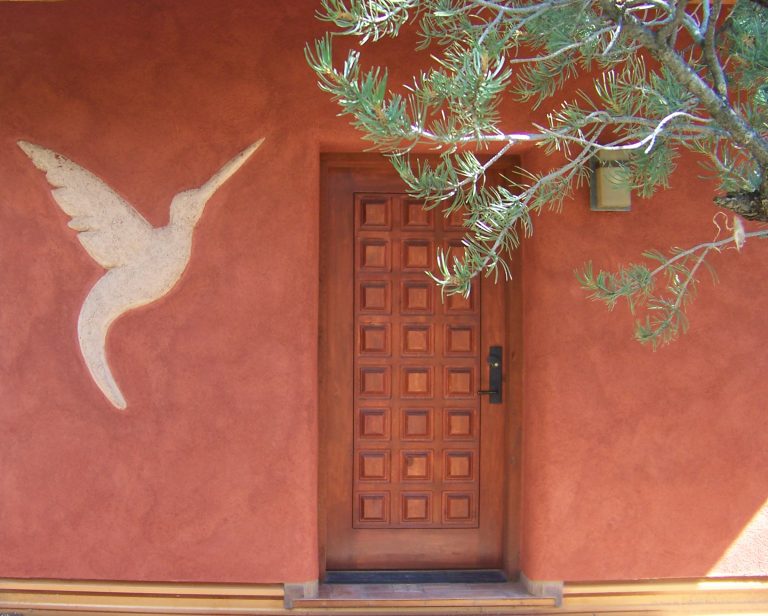
Moreover, strawbale construction offers other benefits, such as exceptional fire resistance and excellent sound insulation, ensuring a comfortable living environment. It also allows for creative design possibilities, enabling homeowners and owner-builders to create unique and innovative spaces to call home.
We could go on and on about building better with bales, but we will close for now with words from deeply knowledgeable, respected experts and authors in the field of strawbale construction:
It is unusual to find an environmentally-friendly alternative that does not require sacrifices in terms of costs, appearance, or availability. Straw bale building provides that magical, and increasingly necessary, alternative to wasteful, unsustainable modern practices.Chris Magwood & Peter Mack, Straw Bale Building, 2004.
Learn more about other benefits of strawbale construction in our blog, How a Straw Bale House Can Change the World.

